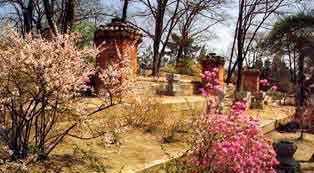 |
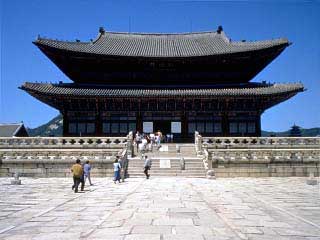 |
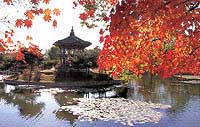 |
In 1394, King T'aejo, begin building Kyongbokkung Palace. The construction work was completed in the following year on October 28. The palace was destroyed during the Japanese invasion in 1592. Its reconstruction was under taken by the Prince Regent Taewon-gun in 1865 and completed two years later. Most of the interior parts of the reconstructed palace were destroyed by the Japnanese again in 1910 and today there reamins only a limited part of the palace structure. The 13-story pagoda standing in the garden of palace today. The Kunjongjon, the main throne hall of palace, served as the place where coronation ceremonies and other official events were held. The Kyonghoery Pavilion served as a place of banquets hosted by the king. Located to the northeast of this pavilion is the Hyangwonjong Pavilion whose beauty is especially evident in the spring and autumn. To the north of Hyangwonjong is the National Folklore Museum. It stands on the former site of Konch'onggung.
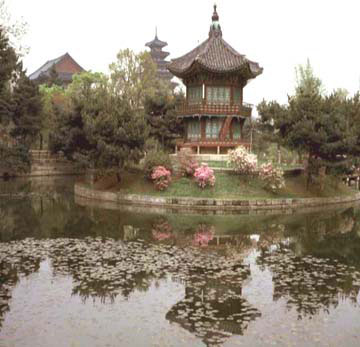 |
 |
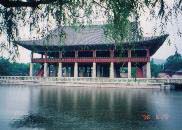
Kyonghoery Pavilion is a two-story banquet hall set in an artificial pond with two stone bridges leading to the hall on the east and a stone staircase serving as a gangplank. The pavilion is surrounded by stone railings on which are carved a diversity of animal figures, as in the throne hall. Forty-eight large tapered columns of while granite support the superstructure from the lower platform; the superstructure has a inner and an outer veranda with sliding doors between. The lower story is open and the upper story provides a spacious wooden floor with three stages, the central stage being higher than the others. A great curving roof caps the structure.
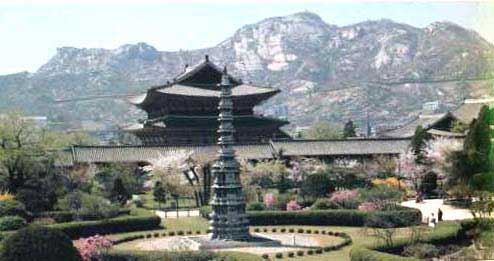
The 13-story pagoda standing in the garden of Kyongbokkung Palace today formerly belonged to the Kyongch'onsa Temple. During the Japanese occupation the pagoda was removed to Japan. It was not until 1960 that the ancient pagoda was recovered by Dorea and reset at Kyongbokkung location. The pagoda is set on a three-story star-shaped pedestal and has a ten-story stone structure which was built in 1348 during the Doryo Kingdom. The pagoda has refined engraving which lend magnificent beauty to the whole stone structure.
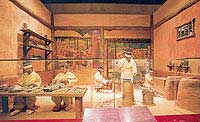 |
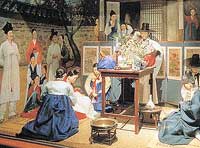 |
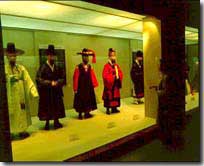 |
The National Museum displays Korea's historic treasures and prceless cultural legacies. It contains a total of 120,000 relics of historical value ranging from the prehistoric era to contemporary times, inclucing cultural assets from nearby countries such as Japan and china. It contains a Social Training Center, souvenir shops and other convenience facilities.



